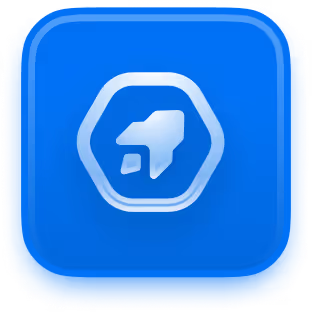.jpg)
Segmentation: Targeting the Right Audience for Conversions

In today's highly competitive market, reaching the right audience with your email marketing message is essential for success.
With so much noise and competition, it's easy for your message to get lost in the crowd. That's where segmentation mastery comes in—a strategy that involves dividing your audience into smaller, more targeted groups based on specific criteria.
By doing so, you can tailor your marketing efforts to better meet the needs and preferences of each segment, ultimately leading to better conversions and overall success.
In this comprehensive guide, we'll explore the ins and outs of segmentation mastery and how you can leverage it to unlock the full potential of your marketing campaigns.
Understanding Segmentation
Understanding segmentation means breaking down your customers into different groups based on things like age, interests, or where they live. It's like sorting out your toys into different boxes based on their colors or types.
By doing this, you can figure out what each group likes and needs, helping you make better decisions on how to sell your products or services.
For example, if you're selling toys, you might find that younger kids like colorful toys while older kids prefer action figures. Knowing this helps you market your toys better.
Segmentation is like having a special map that guides you to the right customers, making it easier to sell your stuff and make your customers happy.
Segmentation also helps businesses understand why customers buy certain products or services. By studying purchasing behavior within different segments, companies can tailor their marketing strategies to appeal to specific customer needs and preferences.
This approach not only increases the effectiveness of marketing efforts but also fosters stronger relationships with customers, leading to greater satisfaction and loyalty over time.
In essence, segmentation is like a secret key that unlocks valuable insights into customer behavior, enabling businesses to connect with their audience in more meaningful ways.
.jpg)
Types of Segmentation
Segmentation helps sort customers into groups based on similarities. These groups can be categorized by demographics, behaviors, or preferences. By understanding these segments, businesses can tailor their marketing strategies for better results.
Demographic Segmentation
This involves dividing your audience based on demographic factors such as age, gender, income, education, occupation, and marital status.
Demographic segmentation provides valuable insights into the basic characteristics of your audience and helps you tailor your messaging accordingly.
You can use our lead finder tool to detect the potential person, as it will make sure the person you're contacting are genuinely interested and responsive
Psychographic Segmentation
Psychographic segmentation focuses on the psychological aspects of your audience, including their attitudes, values, interests, and lifestyles.
By understanding the motivations and preferences of different psychographic segments, you can create more compelling and resonant marketing messages.
.jpg)
Behavioral Segmentation
Behavioral segmentation is based on the actions and behaviors of your audience, such as purchase history, website interactions, engagement with marketing campaigns, and brand loyalty.
By analyzing behavioral data, you can identify patterns and trends that allow you to target specific segments with relevant offers and incentives.
Geographic Segmentation
Geographic segmentation divides your audience based on geographic location, such as country, region, city, or climate. This type of segmentation is particularly useful for businesses with localized products or services, allowing them to tailor their marketing efforts to specific regions or markets.
Benefits of Segmentation Mastery
Learn how segmentation boosts conversions. Understand targeting for better results. Discover the power of segmentation mastery.
Improved Relevance
By targeting specific segments with personalized messages and offers, you can ensure that your marketing efforts are relevant and meaningful to your audience. This increased relevance helps capture their attention and encourages engagement, leading to better conversion rates.
Customizing your approach to different segments ensures your efforts resonate with diverse audiences. Personalized marketing fosters deeper connections with customers, increasing trust and loyalty.
Ultimately, this strategy can lead to higher conversion rates and long-term success for your business.\
.jpg)
Enhanced Customer Experience
Segmentation allows you to deliver a more tailored and personalized experience to your audience, addressing their unique needs and preferences. This not only improves customer satisfaction but also fosters loyalty and long-term relationships with your brand.
Segmentation helps you understand each person's needs better. It's like having a special menu just for them! When customers feel understood, they're more likely to stick around and keep coming back for more.
Higher Conversion Rates
When you deliver the right message to the right audience at the right time, you increase the likelihood of conversion.
Segmentation enables you to identify high-potential segments and focus your resources on targeting them effectively, leading to higher conversion rates and improved ROI.
Segmentation helps you pinpoint who needs your product most, ensuring your marketing efforts hit the mark. By tailoring your messages to specific groups, you can address their unique needs and preferences, increasing engagement and conversion rates.
Ultimately, segmentation allows you to optimize your resources and maximize your marketing impact.
Optimized Marketing Spend
By targeting specific segments with relevant messages, you can optimize your marketing spend and maximize the impact of your campaigns.
Instead of wasting resources on broad, one-size-fits-all approaches, segmentation allows you to allocate your budget more efficiently and effectively.
Tailoring your messages to specific audiences ensures they resonate better. This targeted approach minimizes waste and increases engagement. By understanding your customers' needs, you can deliver personalized content that drives success.
.jpg)
Deeper Insights
Segmentation provides valuable insights into the preferences, behaviors, and needs of your audience. By analyzing data from different segments, you can gain a deeper understanding of your customers and identify opportunities for innovation and growth.
By knowing your audience better, you can make smarter decisions. Segmentation lets you see what works and what doesn't. It's like a map that guides you to success.
Implementing Segmentation Mastery
Learn how to divide your audience effectively to boost sales! With Segmentation Mastery, you'll target the right customers for better results.
Collecting Data
The first step in implementing segmentation mastery is collecting relevant data about your audience. This may include demographic information, purchase history, website interactions, and engagement metrics.
The more data you have, the better you can segment your audience and tailor your marketing efforts.
Analyzing Data
Once you've collected data, it's essential to analyze it to identify patterns, trends, and insights. Look for commonalities among your audience segments and use this information to create meaningful segments based on shared characteristics or behaviors.
By identifying similarities, you can tailor your approach to different groups. This helps in delivering targeted messages that resonate with specific segments. Ultimately, it boosts engagement and drives better outcomes.
.jpg)
Defining Segments
Based on your analysis, define distinct segments within your audience that share similar characteristics or behaviors. Consider factors such as demographics, psychographics, behavior, and geography when defining segments.
Aim for segments that are substantial enough to be meaningful but specific enough to be actionable.
Creating Personas
To bring your segments to life, create personas that represent typical members of each segment. Include details such as age, gender, interests, preferences, and pain points.
Personas help humanize your audience segments and guide your marketing efforts by providing a clear understanding of who you're targeting.
Tailoring Messaging and Offers
Once you've defined your segments and personas, tailor your messaging and offers to resonate with each segment's unique needs and preferences. This may involve creating different content, promotions, and incentives for each segment to ensure maximum relevance and engagement.
To make personalizing your emails easier and more effective, consider using Success.ai's AI email writer tool. Our tool utilizes artificial intelligence to generate tailored email content based on recipient data
.jpg)
Testing and Optimization
As you implement your segmented marketing campaigns, continuously test and optimize your strategies to improve performance. Experiment with different messaging, offers, and tactics to see what resonates best with each segment.
Monitor key metrics such as conversion rates, engagement, and ROI to measure success and make data-driven decisions.
Common Pitfalls to Avoid
Learn about common mistakes to steer clear of. Discover tips to avoid pitfalls. Enhance your understanding to succeed.
Over-segmentation: Avoid creating too many segments, as this can lead to complexity and inefficiency. Focus on identifying a manageable number of meaningful segments that allow you to target effectively without spreading your resources too thin.
Ignoring Data Privacy: Be mindful of data privacy regulations and ensure compliance when collecting and using customer data for segmentation purposes. Respect your audience's privacy preferences and only use data in ways that align with their expectations and consent.
Lack of Integration: Ensure seamless integration between your segmentation strategy and other marketing initiatives, such as email marketing, social media, and advertising. Consistency across channels helps reinforce your messaging and enhances the overall customer experience.
Static Segmentation: Avoid treating your segments as static entities. Instead, continuously monitor and update your segments based on changing behaviors, preferences, and market dynamics. Adaptability is key to maintaining relevance and effectiveness over time.
.jpg)
Conclusion
Segmentation is vital for businesses to reach their potential customers effectively. By understanding the preferences and behaviors of their target audience through different types of marketing segmentation, such as demographic or psychographic, businesses can tailor their marketing plans to increase customer conversions.
Whether focusing on existing customers or creating buyer personas for small businesses, segmentation allows for cost-effective strategies that align with the purchasing behavior of consumers.
Leveraging various marketing channels, including social media platforms, can further enhance the effectiveness of segmentation in reaching the right audience and driving successful purchasing decisions.
Our Success.ai’s tools will help your business to make the process much easier as we have everything you need for your email marketing to work well.


Try Success.ai No credit card required
Unlock unlimited access to 700M+ B2B leads, with unlimited email sending & warm-up. Supercharge your growth now with Success.ai!
















.avif)


.avif)





.avif)






.avif)












.jpg)
-min.jpg)









.avif)
.svg)
.avif)

